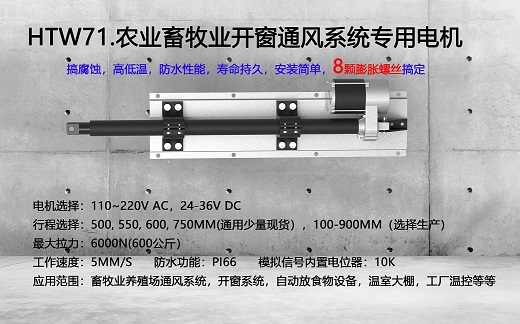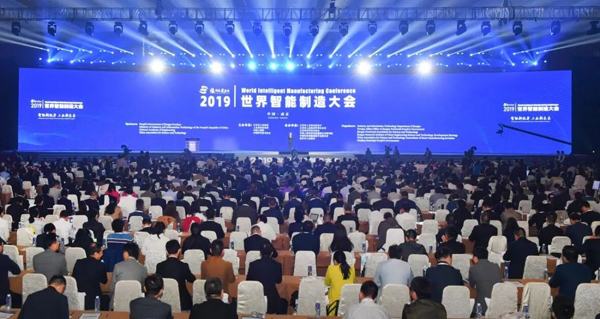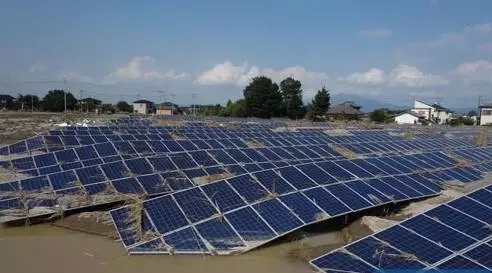 Chian Linear Actuator Website: Recently, natural disasters have occurred frequently in China: On June 23, Suining County, Yancheng, Jiangsu Province was hit by a tornado. Since June 30th, the Yangtze River region along the middle reaches of the Yangtze River, Jianghuai, and other places have experienced the most severe floods since the flood season.
Chian Linear Actuator Website: Recently, natural disasters have occurred frequently in China: On June 23, Suining County, Yancheng, Jiangsu Province was hit by a tornado. Since June 30th, the Yangtze River region along the middle reaches of the Yangtze River, Jianghuai, and other places have experienced the most severe floods since the flood season.
Natural disasters have brought serious impacts on the production and livelihood of the local people. At the same time, they have also brought huge losses to the local photovoltaic industry. For example, in Yancheng, a company’s 3 MW rooftop photovoltaic project was all damaged; and in some areas, the photovoltaic power station received heavy rainfall. And the impact of floods has almost become a veritable "photovoltaic sea."
Natural disasters such as tornadoes, typhoons, and heavy rainstorms have a significant impact on photovoltaic power plants. However, in general, it is precisely in these areas where natural disasters occur frequently that there are a large number of photovoltaic power stations. In the face of relentless disasters, what should PV power plants do?
Professionals in the industry stated that in order to resist the invasion of natural disasters, it is necessary to have a good PV power plant at the three stages of site selection, design, and construction. After the completion of the power station construction, how to effectively prevent natural disasters, the role played by the operation and maintenance of the later period should not be underestimated. It can be said to be interlocking and indispensable.
Question one: How to resist strong winds?
Summer came and the typhoon came. The impact of a typhoon on photovoltaic power plants often has two answers: "flying" and "flying".
This will start with the construction of photovoltaic power plants. In the preliminary investigation stage of photovoltaic power plants, it is necessary to accurately assess the soil, weather, environment, and geological structure of the project site. According to the geology and structure of the project site, the location of the power station should try to avoid frequent occurrence of natural disasters such as typhoons and tornadoes.
The majority of photovoltaic power plant wind resistance is determined by the photovoltaic support. Theoretically, the maximum wind-resistant capacity of the PV bracket is 216 km/h, and the maximum wind resistance of the PV tracking bracket is 150 km/h (greater than 13 typhoons). To withstand the typhoon, you first need a very strong photovoltaic support. Therefore, the photovoltaic power station must strengthen the foundation and support, and at the same time ensure the strength of the frame of the assembly. This requires a targeted site design, strict control of product quality, reasonable calculation of wind pressure, snow pressure and so on.
Distributed photovoltaics in Zhejiang, Jiangsu, and Shanghai are rapidly developing, and these areas are also frequent typhoons in China. Among them, some distributed photovoltaic power plants in Ningbo, Zhejiang Province have accumulated some experience in resisting typhoons.
It is understood that on July 9, 2015, super typhoon "Can Hong" was attacked by Ningbo and the center wind reached 17 levels. The plant roof distributed photovoltaic power station and carport power station, as well as the front of the four tracking photovoltaic power stations received the test of 14 to 16-degree instantaneous wind for more than one day. After the typhoon receded, the power station was not damaged at all.
The most important reason why the power station can resist the typhoon invasion is that the power station system is designed according to the local conditions and strictly refers to the wind-resistant and seismic parameters of the coastal building. The galvanized bracket with strong pressure resistance is selected to design the battery module. And on the layout, wind-resistant air outlets were fully taken into account, and a string-type photovoltaic grid-connected inverter was selected.
This example shows that photovoltaic power plants are fully capable of resisting typhoon 13. As long as it is based on the local climate characteristics and strictly complies with the standard construction, even if a strong typhoon strikes, the photovoltaic power station will not “fly to the sky”.
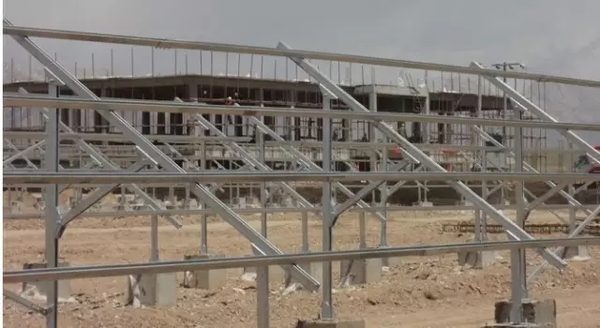
Question 2: How to avoid flooding?
At present, the development speed of photovoltaic power stations in the eastern region is very fast. However, in the rainy season every year, the occurrence of heavy rain and flood disasters in the eastern region is relatively large. It is understood that once photovoltaic power plants in these areas have suffered blisters, in addition to some of the photovoltaic components can also be rescued, electrical equipment is basically scrapped.
Simply think, if you want to avoid flooding, increase the height='auto' rea of the PV power station bracket. But in reality it is not the case. Simply increasing the height='auto' rea of the bracket will definitely increase the cost and increase the instability of the power station. Moreover, extreme weather has emerged. After all, it is still a small probability. Therefore, the most important thing is site selection.
In order not to increase costs, but also to effectively prevent the invasion of floods, the work of the site selection design stage has become more and more important. First of all, in the investigation and site selection stage, we must consider avoiding the use of flood discharge areas, flood detention areas, and flood discharge areas. In designing, if the photovoltaic power station is built on the roof, reference shall be made to the “Loading Code for Building Structures” and full consideration shall be given to the fixed load on the roof; if the power station is built on flat ground, geography and geological factors, such as the orientation of the selected site, shall be taken into consideration. Slope undulation, hidden dangers of geological disasters, water depth, flood level, drainage conditions, etc. In addition, equipment selection is also very important, such as photovoltaic power plant equipment components, inverters, brackets and so on.
In the rainy season in some areas in the south each year, due to the heavy rainfall and relatively concentrated, some PV power station supports are even more stringent and site selection is very strict, but it is also difficult to avoid heavy rainstorms. For example, Yuguang complementary power station and surface power station are built on the surface of the water. Heavy rain will raise the water surface and the panels will be damaged. At this time, if excess rainwater can be drained in time, it will not lead to the soaking of the panels. Therefore, the consideration of drainage conditions is very important. At present, the most effective way is to add drainage systems scientifically.
In addition, for the general inclined-roof home distributed photovoltaic power station, due to its strong drainage capacity, there will generally be no excess water, and the impact of heavy rain will be negligible. However, the flat roof power station is relatively low due to the installation of the brackets. Once the rainfall is too large, the panels may be immersed in rain. Therefore, in order to prevent excessive water accumulation on the flat roof and form a small pond, a set of drainage system can be added before the rainstorm to effectively drain water.
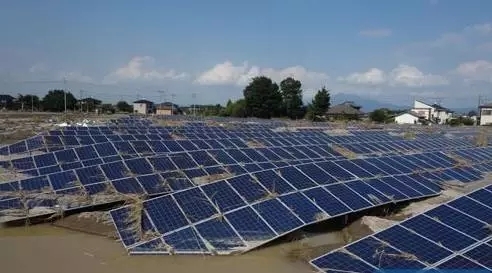
Question 3: How to ensure efficient operation and maintenance?
The design of site selection and construction links are very important, of course, it is very important to improve the ability of photovoltaic power plants to fight against various natural disasters, but the operation and maintenance of photovoltaic power plants in the future can not ignore the role of natural disasters. At present, some newly-built smart photovoltaic power stations can generally achieve efficient operation and maintenance. This is mainly because this type of power station can monitor, operate and maintain, manage, and alarm from time, space, and equipment in multiple dimensions and in multiple dimensions, facilitating the prevention of natural disasters through technical means.
Floods and floods are generally natural disasters in the central and eastern regions of China. For the many western photovoltaic power stations, the most common natural disaster is dust storms. At present, some photovoltaic power stations in Golmud, Qinghai have achieved good results in the prevention of dust. The Yellow River Hydropower Company Golmud 200,000 kilowatts of smart photovoltaic power plant is an example.
It is understood that the reason why the power plant can withstand dust and dust for a long period of time is mainly because the smart photovoltaic power plant simplifies the system network construction. According to 25 years of reliable operation of the system and maintenance-free design, the inverter adopts IP65 protection class to achieve internal and external The isolation of the environment allows the device to maintain a stable operating environment, reducing the impact of temperature, sand, salt and other external environment on the device's life.
At the same time, the power station also uses a string inverter, fully enclosed natural heat dissipation, so that it can withstand dust attacks for a long time, without affecting the power generation and service life of photovoltaic power plants.
Obviously, to ensure the safe and efficient operation of photovoltaic power plants for more than 25 years, the quality of components, preliminary design, and construction are critical. However, in recent years, the phenomenon of jerry-building and cutting of materials in the construction of photovoltaic power plants in some places has seriously affected the safe operation of photovoltaic power plants. At present, the problems of photovoltaic power plants mainly focus on equipment quality, power station design, power station construction and so on.
In the face of the above-mentioned various risk factors, the newly-built smart photovoltaic power station must realize true high-efficiency operation and maintenance. At the beginning of construction, it should fully consider various risks and conduct overall design. Specifically, during the research phase, design phase, and construction phase of the PV power plant, corresponding measures must be taken to avoid risks and ensure safe and trouble-free operation of the PV power plant.

 Product
Product Industrial Use
Industrial Use Furniture & medical Use
Furniture & medical Use PV Drive
PV Drive Collaborative Robots
Collaborative Robots About us
About us Culture
Culture Milestone
Milestone Responsibility
Responsibility Contact Us
Contact Us News and Events
News and Events Global agents
Global agents Certificate
Certificate GeMinG
GeMinG English
English


